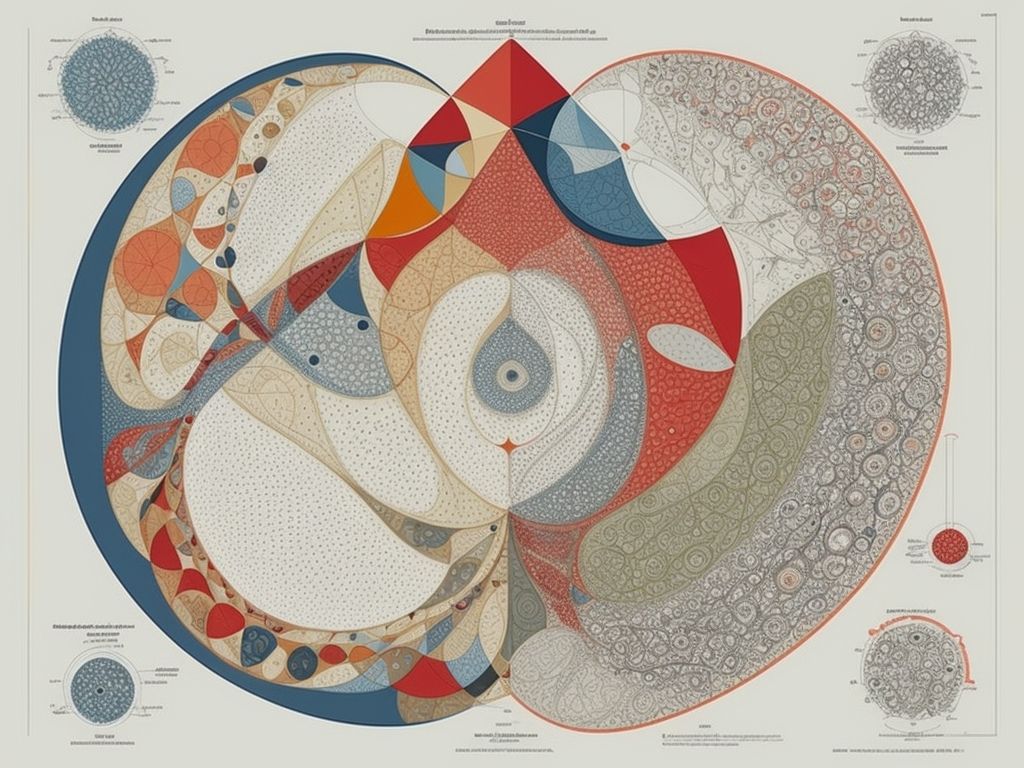Polling Insights from University of Massachusetts Lowell: A Close Look at Voter Shifts
Understanding Voter Behavior Patterns
Voter behavior patterns are a complex web of influences that shape how individuals make their choices at the polls. These patterns encompass a range of factors, including personal beliefs, societal values, and past experiences with political leaders and parties. Understanding these patterns is crucial for political analysts and strategists seeking to predict and interpret election outcomes.
By delving into voter behavior patterns, researchers can uncover the underlying motivations that drive individuals to support certain candidates or parties. This insight allows for a deeper understanding of the electorate’s dynamics and helps in crafting more targeted and effective campaign strategies. Furthermore, analyzing these patterns over time provides valuable insights into how political landscapes evolve and how shifts in voter behavior can impact the outcome of elections.
Factors Influencing Voter Shifts
Factors influencing voter shifts can be multifaceted and dynamic, often shaped by a combination of political, social, and economic circumstances. One key factor is the candidates themselves, as their policies, personalities, and past actions can sway voters’ opinions. Additionally, external events such as scandals, crises, or major policy changes can significantly impact voter behavior and lead to shifts in support from one party to another.
Moreover, societal trends and cultural shifts play a crucial role in influencing voter behavior. Changing attitudes towards issues like climate change, healthcare, or social justice can rally support behind candidates who align with these evolving values. Economic conditions also have a substantial influence on voter shifts, with issues like unemployment rates, income inequality, and the affordability of necessities often driving voters towards candidates who offer solutions to these challenges.
Impact of Demographics on Polling Data
Demographics play a crucial role in shaping polling data. Factors such as age, gender, race, education, and income level can significantly influence how individuals choose to vote. For example, younger voters may lean towards progressive policies while older voters may be more conservative in their preferences. Similarly, income levels can impact priorities and policy preferences among voters, leading to differences in electoral outcomes.
Moreover, understanding the demographic makeup of a certain area can provide valuable insights into potential voting patterns. By analyzing the demographics of a specific region, pollsters can better tailor their sampling methods and predict possible outcomes more accurately. For instance, a predominantly urban area may show different voting tendencies compared to a rural community, highlighting the importance of considering demographics in analyzing polling data.
Analysis of Historical Voting Trends
Analyzing historical voting trends provides valuable insights into the evolving dynamics of elections over time. By examining patterns from previous elections, researchers can identify recurring themes, shifts in voter preferences, and the impact of various factors on electoral outcomes. This data-driven approach allows for a deeper understanding of how political landscapes have evolved and how past events have shaped present voting behaviors.
Historical voting trends also serve as a foundation for predicting future election results and understanding the potential implications of current events on voter behavior. By studying the historical context of elections, analysts can identify common themes that may influence upcoming polls and anticipate how different demographic groups may respond to changing political climates. This historical perspective offers a roadmap for interpreting the complexities of voter motivations and provides a framework for assessing the potential trajectories of future elections.
Role of Political Events in Voter Decision-Making
In the realm of politics, the influence of significant political events on voter decision-making cannot be understated. From debates and scandals to policy changes and international developments, these events have the power to sway public opinion and ultimately determine electoral outcomes. The impact of political events on voter behavior is multifaceted, as they can trigger shifts in priorities, beliefs, and allegiances among the electorate.
Moreover, the timing and context of political events play a crucial role in shaping voter perceptions. Events closer to Election Day tend to have a more immediate and pronounced effect on voter decision-making, as they are more likely to be top of mind for voters when they go to the polls. Additionally, events that resonate with key voter demographics or align with prevailing sentiments in society have the potential to mobilize or alienate certain segments of the electorate, further shaping the electoral landscape.
Comparison of Polling Methods
When it comes to comparing polling methods, it is crucial to consider the different approaches used to gather data on voter preferences. Some common polling methods include telephone surveys, online polls, in-person interviews, and exit polls. Each method has its own strengths and limitations, impacting the accuracy and reliability of the data collected.
Telephone surveys have traditionally been a popular polling method, allowing for a wide reach and relatively quick data collection. On the other hand, online polls have gained traction in recent years due to their cost-effectiveness and ability to target specific demographics. In-person interviews provide a more personal touch, but they can be time-consuming and may not always be representative of the larger population. Exit polls are conducted on Election Day to capture the immediate preferences of voters as they leave the polling stations, offering valuable insights into voter behavior.
Importance of Sample Size in Polling Accuracy
Sample size plays a crucial role in ensuring the accuracy of polling data. A larger sample size generally leads to more representative results, providing a better reflection of the overall population’s opinions and behaviors. In contrast, a smaller sample size can introduce biases and inaccuracies, potentially skewing the results and misleading analysts in their interpretations.
To achieve reliable and trustworthy polling outcomes, researchers must carefully consider the size of the sample they are using. By selecting a sample that is both sufficiently large and diverse, pollsters can increase the validity and generalizability of their findings. Additionally, understanding the relationship between sample size and margin of error is essential in evaluating the precision of polling data and making informed conclusions based on the results obtained.
Challenges in Predicting Election Outcomes
Predicting election outcomes, although crucial for shaping political strategies, is no easy feat. One of the primary challenges lies in the dynamic nature of voter behavior, which can be influenced by various factors such as evolving societal norms, unexpected events, and the effectiveness of political campaigns. The landscape of politics is ever-changing, making it difficult to accurately forecast how individuals will cast their votes.
Furthermore, the increasing polarization within societies adds another layer of complexity to predicting election outcomes. With voters becoming increasingly divided along party lines, accurately gauging the preferences of the electorate as a whole becomes a challenging task. This polarization not only affects the accuracy of polling data but also introduces uncertainties in deciphering the true intentions of voters. The challenge for political analysts lies in navigating these intricate dynamics to develop reliable predictions of election outcomes.
Strategies for Improving Polling Accuracy
To enhance the accuracy of polling data, employing diverse polling methods is crucial. Utilizing a combination of telephone surveys, online questionnaires, and in-person interviews allows for a more comprehensive understanding of voter sentiments. Each method has its strengths and limitations, and by integrating multiple approaches, pollsters can mitigate the biases inherent in any single methodology.
Moreover, continuous refinement of sampling techniques is imperative for improving polling accuracy. Implementing stratified random sampling, where the population is divided into subgroups based on relevant characteristics, helps ensure a representative sample. Additionally, adjusting for non-response bias and regularly updating voter lists are essential steps in increasing the reliability of polling data. By adopting these strategies, pollsters can enhance the precision of their forecasts and provide a more accurate reflection of public opinion.
Implications of Voter Shifts on Future Elections
Voter shifts have the potential to shape the outcomes of future elections significantly. As the electorate evolves, political parties and candidates must adapt to these changing preferences to effectively engage with voters and secure their support. Understanding the underlying reasons for voter shifts is crucial for strategizing and tailoring campaign messages to resonate with the changing demographics of society. The impact of these shifts extends beyond individual elections, influencing the overall political landscape and potentially leading to substantial realignments in the party system.
Moreover, the implications of voter shifts go beyond just electoral outcomes. They also reflect broader societal trends and shifts in values, attitudes, and priorities among the population. By examining these changes in voter behavior, analysts can gain valuable insights into the evolving needs and concerns of the electorate. This understanding can guide policymakers in crafting policies that address the pressing issues of the day and resonate with the changing preferences of voters. As such, staying attuned to voter shifts is essential for political actors seeking to remain relevant and responsive to the ever-changing dynamics of the electorate.
- University of Massachusetts Amherst Polls: Analyzing Voter Behavior in Massachusetts - January 5, 2025
- Polling Insights from University of Massachusetts Lowell: A Close Look at Voter Shifts - January 5, 2025
- University of New Hampshire Polls: Analyzing Key Presidential Primary Data - January 5, 2025









